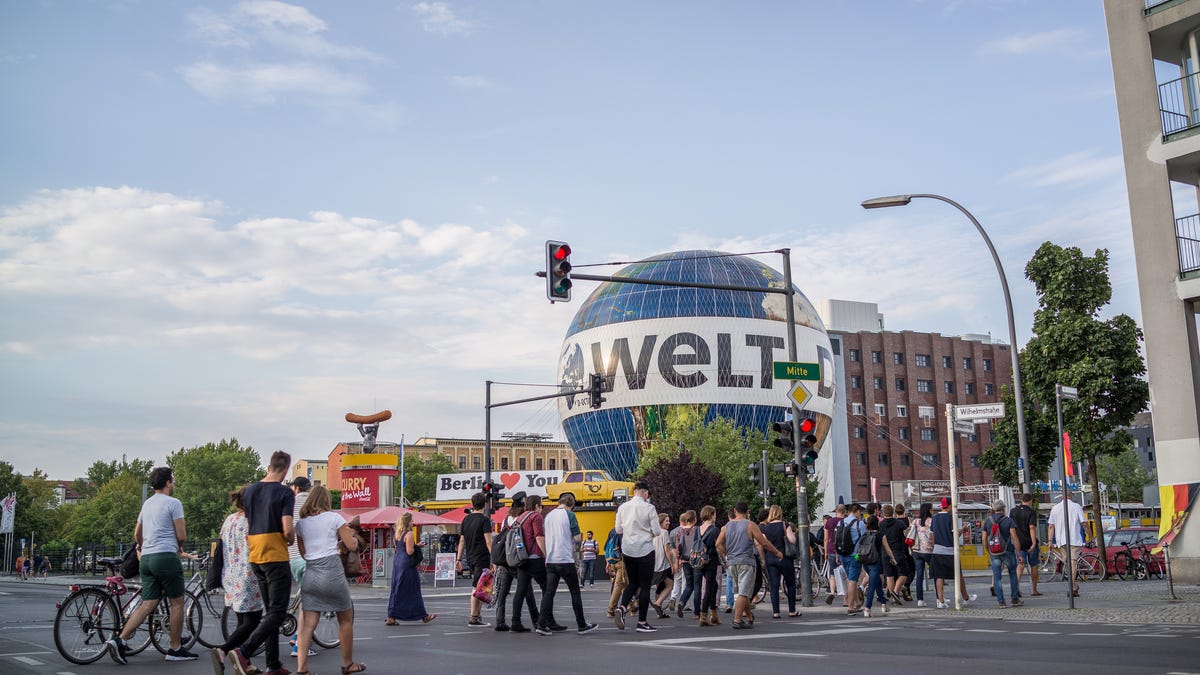Capturing our refugee stories on a single fixed-lens camera
Commentary: I only took a 35mm Sony RX1R camera to document the stories we found on Road Trip 2016. Here's why.

This is part of our Road Trip 2016 summer series "Life, Disrupted," about how technology is helping with the global refugee crisis -- if at all.
In August, I spent three weeks traveling through Germany and Hungary with CNET reporters Shara Tibken, Joan Solsman and Katie Collins to find out how technology is being used by refugees and migrants trying to start a new life in Europe.
You can -- and should -- read about what we found in our special feature package, called "Life, Disrputed." My part in the project was to document the stories and capture images of the people we met on this reporting journey. For the trip, I decided to leave behind my trusty Canon 6D and its multitude of lenses and take instead the fixed lens Sony RX1R compact camera.
The main reason was size. I knew I'd cover a lot of ground, including walking many miles and regularly jumping in and out of cars and onto trains. My 6D is my go-to camera for all my work for CNET, but its larger size and its 1.4-kilo (3 pounds) weight (with a lens attached) demands its own photography backpack to comfortably carry around all day. I was keen to avoid that on this trip. The RX1R packs in a full-frame image sensor for gorgeous, professional shots, weighs only 482g (1 pound) and fits in the palm of my hand. It's ideal for travel and reportage photography when you absolutely have to travel light.
Comfort while traveling wasn't the only benefit, though. The RX1R is also inconspicuous, which meant I could tuck the camera away under a jacket if needed. This was important as we were visiting areas that weren't always safe -- or friendly toward reporters and photographers. Our team reporting in Greece had their larger DSLR cameras stolen. But with just a compact camera in my hand, I could pass as a tourist.
Shooting with a smaller camera seemed to put my subjects more at ease than if I'd used a bulky, professional-looking dSLR. The full-frame sensor gives this shot of Syrian filmmaker Jalal Mando a beautiful dynamic range and dramatic feel.
Its compact size was also a benefit when taking portraits of the refugees I met during the trip. Having a DSLR with a portrait lens shoved in your face can be a daunting experience, and it sometimes makes people feel uncomfortable. By contrast, the small camera seemed like much less of a threat and put my subjects at ease.
Having a fixed lens presents its challenges, though. When I wanted to capture a wider scene, I couldn't simply swap in a wide-angle lens as I would with my Canon 6D. This was awkward at first, but I soon found it to be an interesting creative challenge. Shooting with a fixed lens meant I had to think more about the image I wanted to capture, moving myself around the scene to change the angle and composition, rather than just zooming in and out from a fixed position.
The end result was much more contemplative photographs. Simply standing still and popping on a different lens might have helped me get an image faster, but the shot itself may not have come out as well.
Being able to easily carry the camera everywhere meant I was instantly ready to shoot when I happened upon this group of Muslim men, demonstrating with placards of peace in Munich city center.
That doesn't mean the RX1R is perfect -- there's no optical viewfinder, so you have to compose your shots using the LCD screen. That's a huge battery drain and as such, I found it wouldn't last a full day of shooting on a single charge. It charges over micro USB, though, so I was able to use the same portable battery packs I use for my phone with the RX1R. It's not an ideal solution, but it kept me snapping away through the day.
Will I take the SonyRX1R out on other feature projects, rather than fast-turnaround news events? Yes. Its small size means I can always have it around my neck, ready to shoot in an instant. The shots it delivers aren't only far better quality than you'd get from a regular compact camera, but are given an additional artistic quality thanks to the creative challenge of shooting with a fixed lens.

